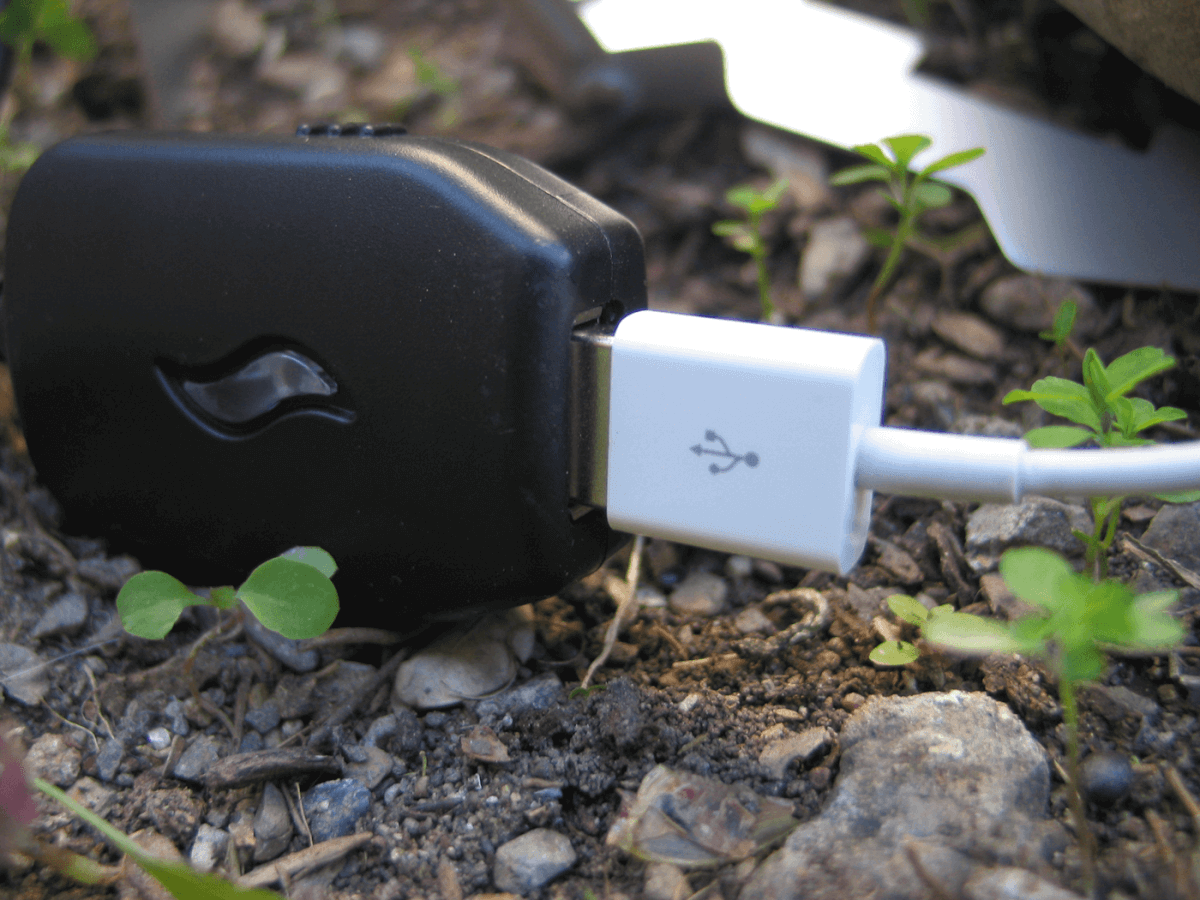Batteries die. It’s a fact of modern life; it seems that the farther you are from your house, the quicker they wither up and die like a rose in the oven.
What’s just dumb luck is that sometimes those batteries die at just the moment you need them most, like in the middle of a phone call to FEMA or when you’re just about to send a text to the rescue party informing them of your location. This throws you right into a jam because of other facts of modern life: battery backups die, solar panels don’t work at night, hand crank chargers lose their effectiveness over time, and you can’t plug car chargers into trees. So, what are you to do, miles from nowhere and in dire need to recharge your communication device, radio, or even a camp light? Reach for the 9-ounce FlameStower and you have an endless supply of power; if you can build a fire, you can power your phone.

On October 24, 2013, FlameStower, a company started by Andrew Byrnes and Adam Kell in Andrew’s garage in East Palo Alto, completely funded their Kickstarter campaign in the effort to provide alternate sources of energy. After a year of development and prototyping, they began selling the FlameStower, a very simple and lightweight device that can recharge anything that accepts a USB charge. And this is done over any open flame, burning any kind of fuel: wood, coal, propane or your grandmother’s basket of yarn… anything.

Extend the legs, flip open the charger and position the metal blade directly in the fire. Fill the rubber reservoir with water, and after a few short moments, the indicator light on the USB connector will begin to glow green. Plug in your whatever and watch the power indicator rise. The device works because of the Seebeck effect, named after the German physicist Thomas Johann Seebeck, who in 1821 discovered that two metals reacted to a temperature difference in different ways, creating both a current loop and a magnetic field. This effect is achieved by heating one piece of metal over the fire and cooling another via the water-filled reservoir. Between the two pieces of metal, an electric current is generated.

How quickly this process works depends on how hot the fire is and how cold the water is. Generally speaking, according to FlameStower, “if it takes an hour and a half to completely charge your phone at home, it will take three hours to completely charge your phone with FlameStower.”
We set up our FlameStower for a small test to see how well it would charge an old iPhone 4, which started at an 85-percent charge. Setup of the FlameStower was very easy, even if it took us a moment to figure would which way the main leg went and how to unhook the charger converter. The way it compacts itself for storage is a convenient design, making it nearly impossible for the charger converter to come loose and flop around. We would like to have seen the legs be a little stouter, as the unit is quite top heavy, but an easy fix is to put a rock under the side stabilizers legs.

Once the fire was lit we placed the blade right into the flame, as instructed, and waited. Meanwhile, the fire can be used for a host of things, as you normally would. Because the blade fits directly in the fire, it won’t be in the way of a pan or cup when preparing food or boiling water.

We poured enough water in the reservoir to fill it approximately three-quarters full and waited only a few moments for the green light on the charger converter to come on. Once it did, we plugged in our phone’s USB cable. And we got an error on the phone saying that it was an incompatible charging device. Perhaps we should read the directions.

Since the charger produces about two watts of power and most phones consume that much, we put the phone in airplane mode and turned off the screen for a while. Consulting with the website, we learned the error message meant nothing and that the device was still charging. About 10 minutes later, once the flame from the chemical stove started to die, we checked the phone and, sure enough, it had charged six percent.

Dismantling the charger and putting it away is just as easy as setting it up. Wait for the blade to cool and then wrap it all up the way you took it down. It is a unique device that proved itself to be very useful in a variety of dire situations where having emergency power is essential.
Editor’s note: A version of this article first appeared in the March 2015 issue of American Survival Guide.


